Homo sicut fenum dies ejus, tanquam flos agri sic efflorebit quoniam spiritus pertransibit in illo et non subsistet et non cognoscet amplius locum suum.
A man, his days are as grass, as the flower of the field so shall he flourish for the spirit shall pass in him, and shall not be: and he shall know his place no more.
The “catacombs” are what house the “ossuaries” that most people associate with the attraction known as the “Paris Catacombs.” These underground stone tunnels date to the 1100s when Paris was a young and thriving city ruled by a new dynasty of kings called the Capetians. During this time, miners took limestone from underground quarries and built the city. Notre Dame and much of the Latin Quarter contains stone from this era. In the 12th century, through to later centuries, digging only happened under uninhabited, rural areas.
However, as time passed and more illicit mining occurred, underground tunnels spread in unmanageable ways. Many tunnels and quarries were unmapped and later forgotten when they were abandoned. And, as Paris evolved and expanded above ground, places that were once rural became urban and populous. It was in 1774 when the first buildings in Paris collapsed into a large underground limestone quarry and Parisians began to think that the city was hollow. In that same year, Louis XVI created the Inspection Générale des Carrières who were given the task to go underground and map, consolidate, and improve the safety of the underground passages and quarries.
Meanwhile, above ground, the city faced another desperate struggle: how to handle overflowing cemeteries in the centre of Paris. Being one of the oldest European cities, Paris had run out of the space needed to bury its dead (and they preferred central cemeteries over finding space in outlying areas). Cremation was not an accepted practice and in old graveyards like Cimetière des Innocents (the city’s primary cemetery) workers would periodically dig up bones to make space for the newly departed. These old bones were then stacked in hollow walls around the cemetery and sealed away from the public… until they became too heavy or during rains when these walls would weaken, break and spill the remains into Paris’ central food market.
In 1785, another collapse of a mass grave coincided with the conclusion of the work of the Inspection Générale des Carrières and led to the decision by city officials to move Paris’ dead underground into ossuaries. Initially, between 1786-1788, bodies were moved after dark by priests walking beside carts filled with bones covered in a black shroud. At the entrance to the catacombs, these bones were dumped unceremoniously into a large well, which over the course of 3-decades became a mass grave.
However, in 1810, Louis-Étienne Héricart de Thury, the head of the Inspection Générale des Carrières took it upon himself to renovate the caverns and build a mausoleum in memory of the departed. He had the bones stacked into the patterns that you now see, and he transformed the passageways and chambers into memorials. The oldest of these is the Sepulchral lamp, which originally contained a fire that burned constantly to promote the flow of air through the chambers.
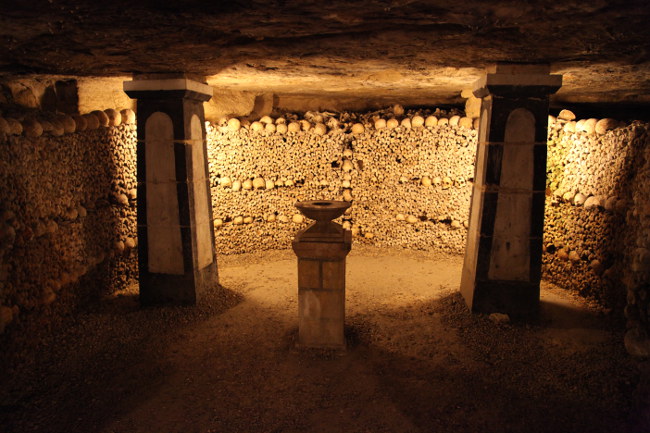
As a tourist, you only experience a small, closed portion of the catacombs and ossuaries. On a whole, the 400-miles of largely unmapped, partially explored tunnels encompasses all of subterranean Paris. There are thought to be 7-levels deep (300 feet) and over 6-million people buried in these caverns. Not all bones are in the patterns laid out by Héricart de Thury. Revolutionaries like Robespierre, Couthon, Saint-Just, Hanriot, Simon, and writers like Racine and Marat are somewhere in the tunnels.
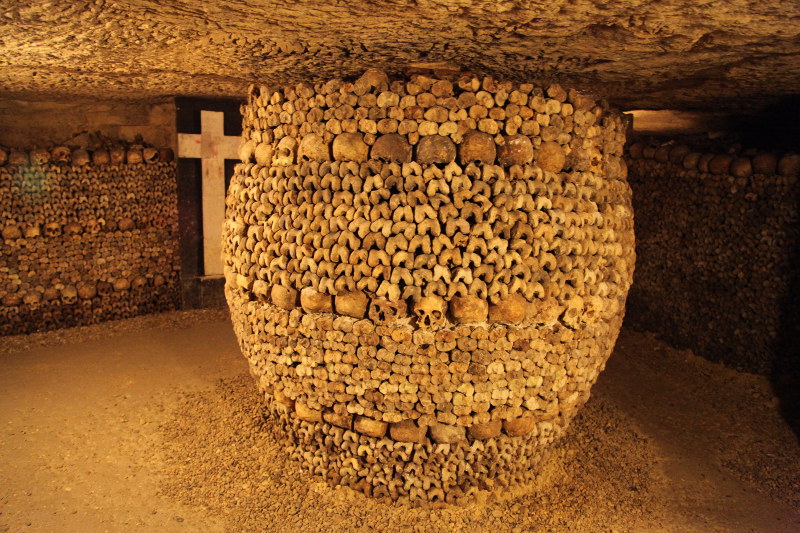
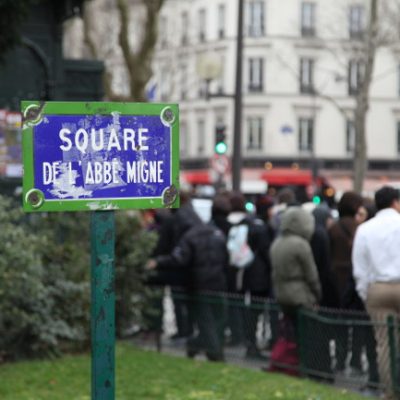

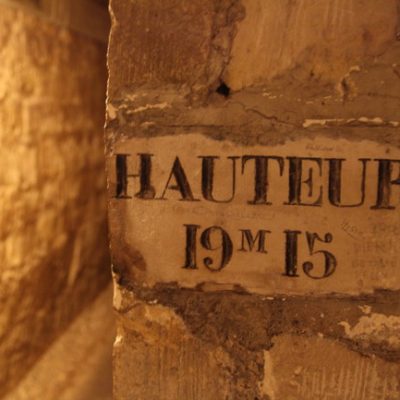
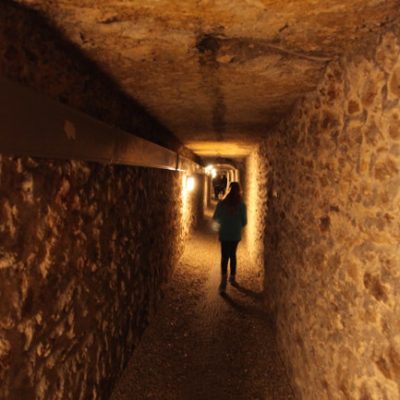
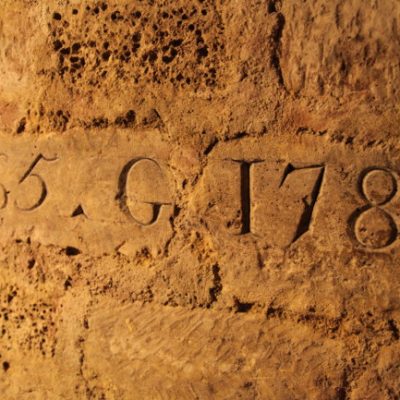
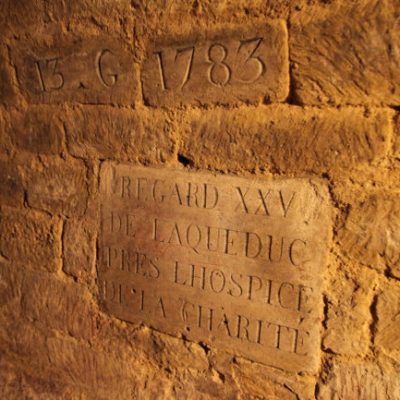
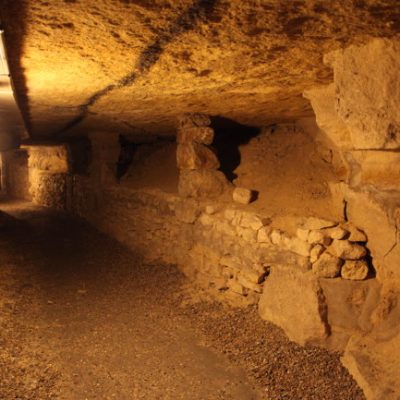
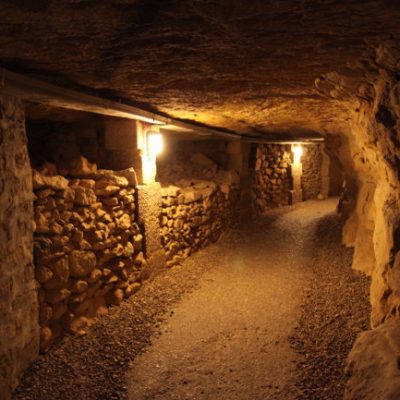
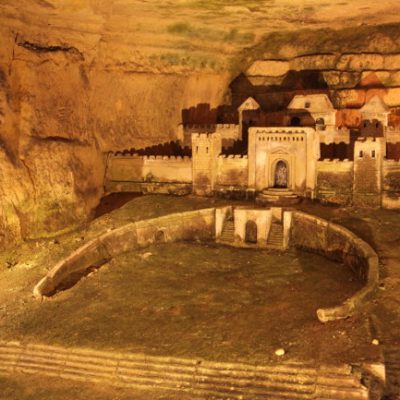
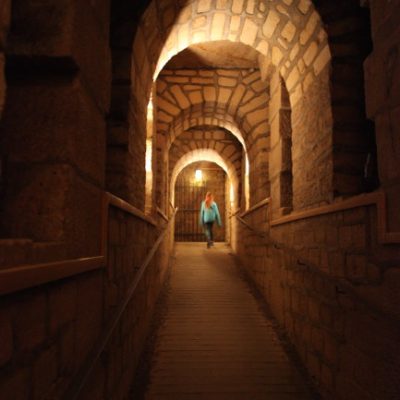
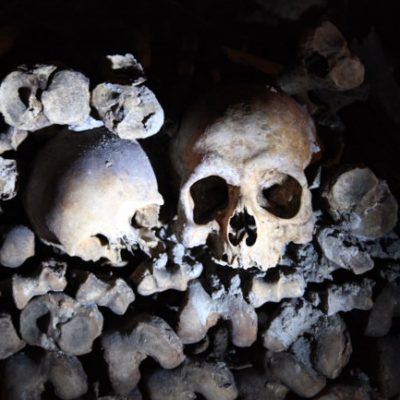
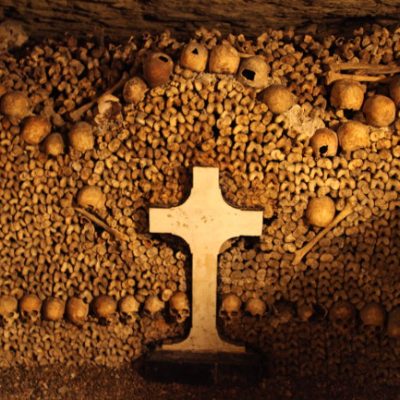
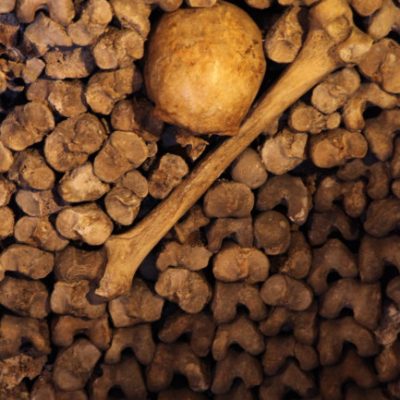
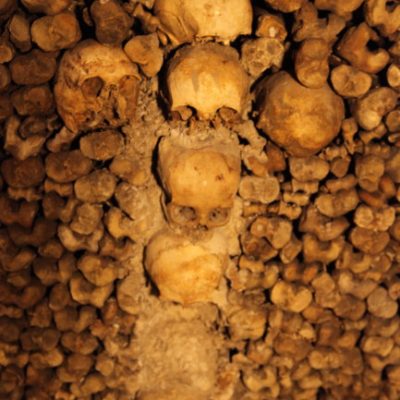
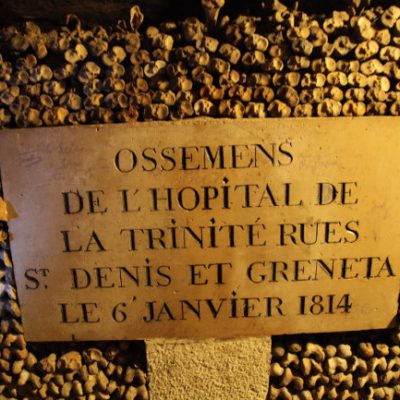
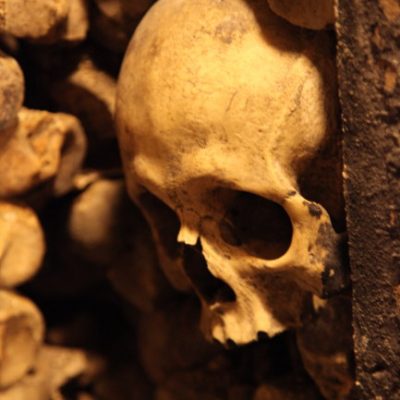
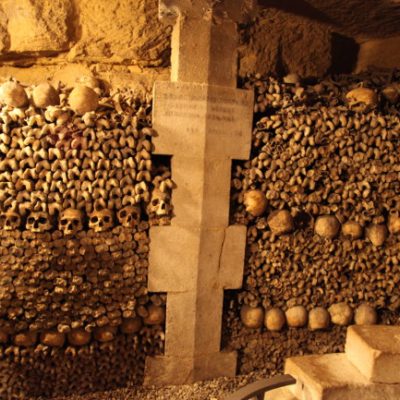
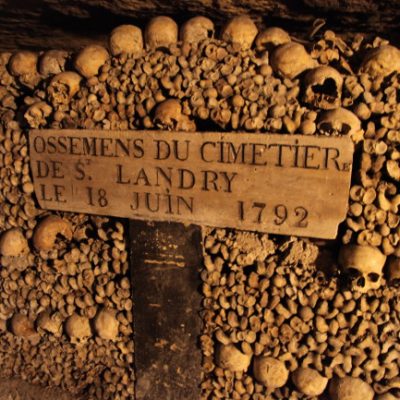
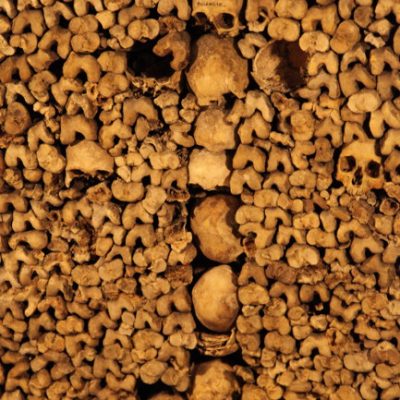
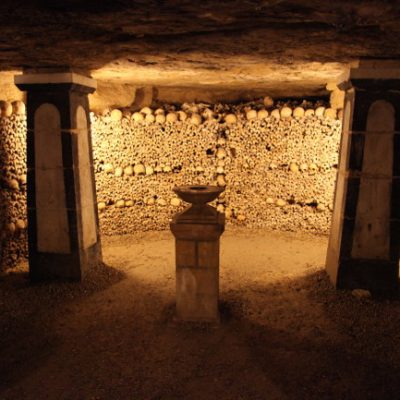
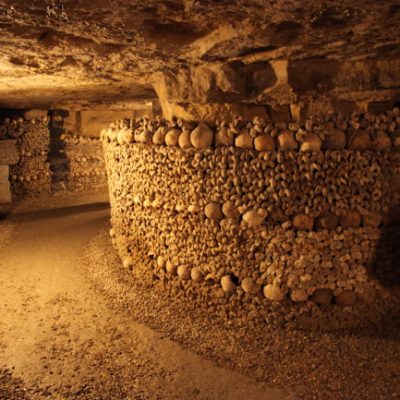
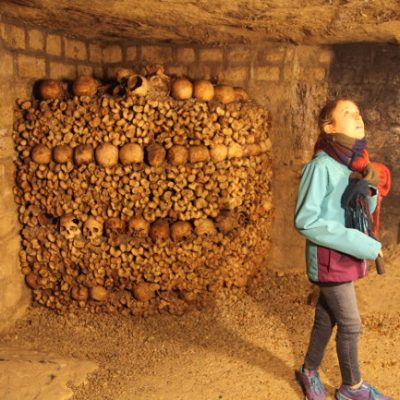
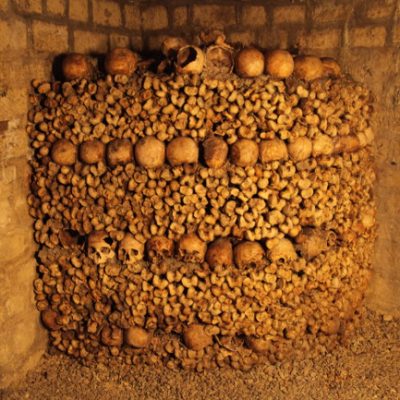
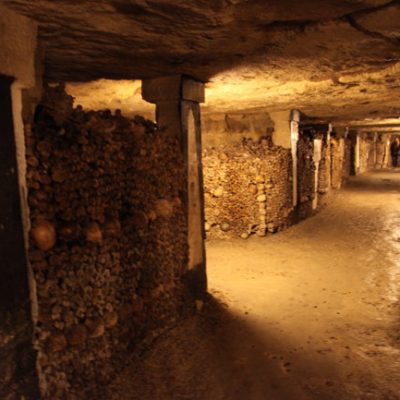
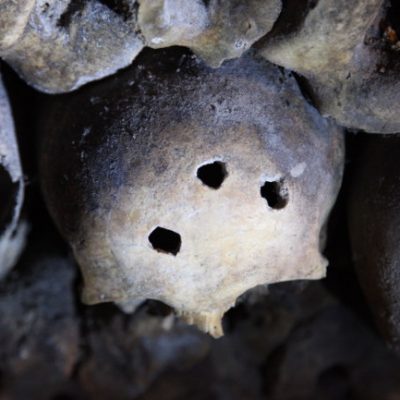
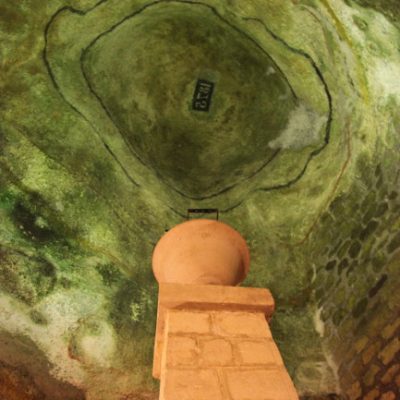
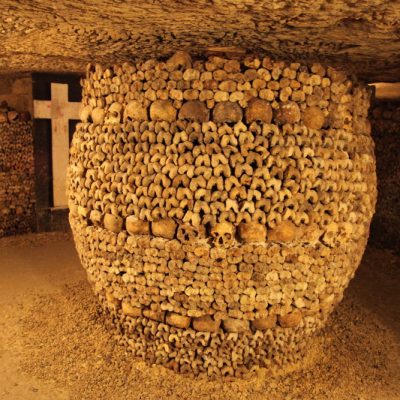
0 comments on “Les catacombes et les ossuaries (Paris Catacombs)”Add yours →